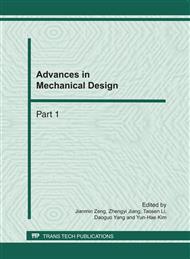p.3
p.7
p.13
p.19
p.25
p.32
p.41
p.48
Synthesis and Characterization of Polyimides Derived from Novel 1,3-Bis(4-Aminophenoxy)Benzene
Abstract:
A novel aromatic ether diamine 1,3-bis(4-aminophenoxy)benzene (TPER) was synthesized. Four kinds of polyimides were prepared with obtained TPER, 4,4’-diaminodiphenyl(ODA), pyromellitic dianhydride (PMDA) and end capped with phthalic anhydride(PA). The imidization process was solution imidization followed by solid-phase thermal imidization. The results of DSC, 1H-NMR and FTIR analysis showed that high purity TPER had been successfully synthesized. FTIR spectras of polyimides indicated the imidization process could reduce the final imidization temperature. The inherent viscosities([η]) showed molecular weight could be controlled via the introduction of flexible diamine and end capping agent. And all polyimides exhibited excellent thermal stability.
Info:
Periodical:
Pages:
13-18
Citation:
Online since:
February 2011
Authors:
Keywords:
Price:
Сopyright:
© 2011 Trans Tech Publications Ltd. All Rights Reserved
Share:
Citation:


